Immune stimulant, anti-viral, and anti-bacterial.
ABOUT AGARIKON MUSHROOMS
Over 2,000 years ago, a famous Greek physician, Pedanius Dioscorides, used this polypore as a curative, most notably for consumption (tuberculosis). Containing Agaric Acid, Agarikon has been used over the centuries in numerous preparations and by many indigenous cultures. These unique mushrooms only grow in the remaining old growth forests of Europe, Asia, and North America. Clinically proven as to be an exceptional antiviral, this mushroom has been the subject of much current medical interest.
A Greek physician called Diosorides described the Agarikon mushroom as "the elixir of long life" in 65 A.D. in his Materia Medica. The mushrooms themselves have been known to live for up to 75 years! Natives living in the Pacific Northwest also used to mushroom for a variety of medicinal purposes.
Many scientific studies have been conducted on the mushroom. Today, we know that Agarikon mushrooms:
• have anti-inflammatory and antibacterial properties
• have strong anti-viral activity
• alleviate the side effects of harsh treatments (like chemotherapy)
• strengthen the immune system
• provide respiratory system support
According to RenegadeHealth, the Agarikon mushroom is #3 in the list of Top 5 Medicinal Mushrooms. Additionally, the Institute for Tuberculosis Research at the University of Illinois conducted a study which proved that strains of the Agarikon mushroom will seek out and attack tuberculosis bacterium.
Abstract from MEDLINE PUBMED
- PMID:
- 22135883
- [PubMed - indexed for MEDLINE]
Agarikon.1 is a result of long-term, comprehensive research. It works in the lab, in vitro (cell cultures) and in vivo (on animal models). What separates Myko San’s Agarikon.1 is that we also know it works in humans – we have conducted 3 human cohort studies during development.
In addition, we have analyzed the medical records of more than 20,000 users over a 20-year period. After a detailed follow up and statistical analysis, we refined our products, dosage, and regimen. Repeating this process several times, we have greatly improved the efficacy. We were less dependent on guesswork or blindly following traditional advice, and more on science and experimental data.
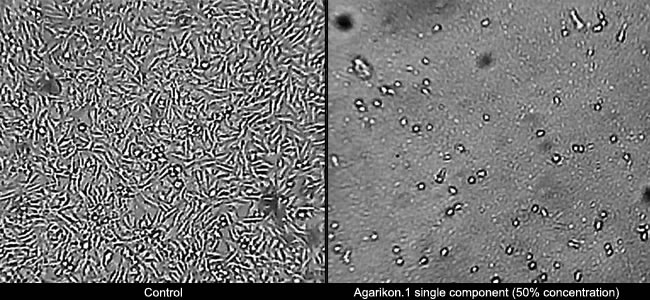
Left is the control; on the right a 50% concentration of a single Agarikon.1 component demonstrating a direct cytotoxic effect (killing cancer cells).
Source: Rudjer Boskovic Institute
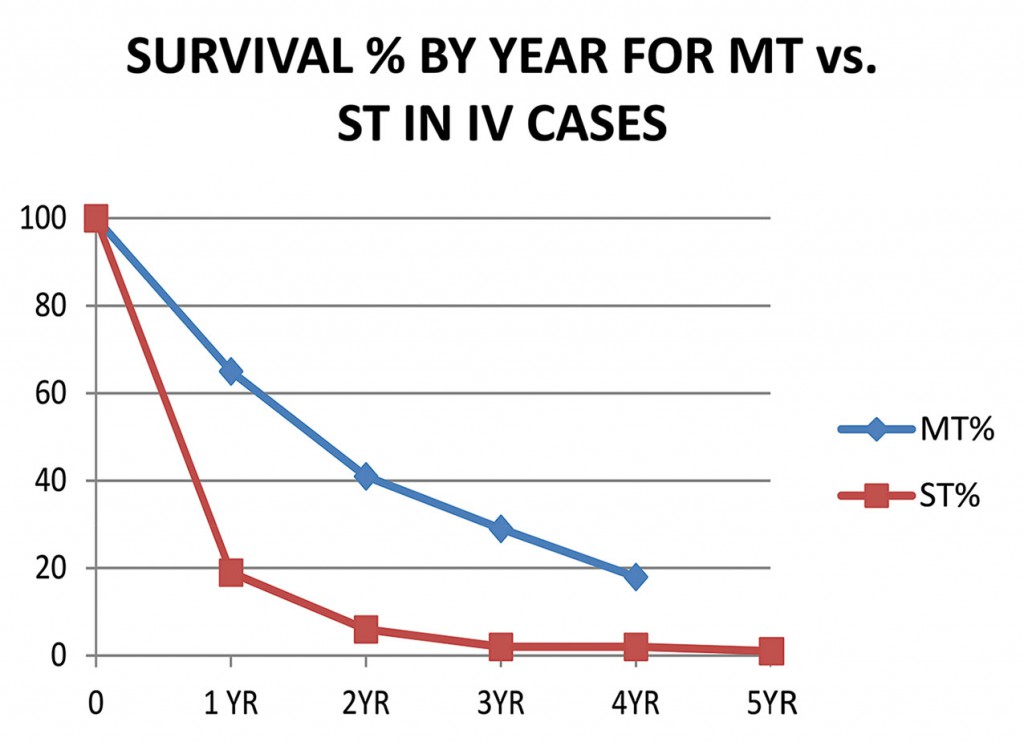
I. Jakopovich, New Dietary Supplements from Medicinal Mushrooms: Dr Myko San–A Registration Report, International Journal of Medicinal Mushrooms, Vol 13 i3 p.307-313, 2011
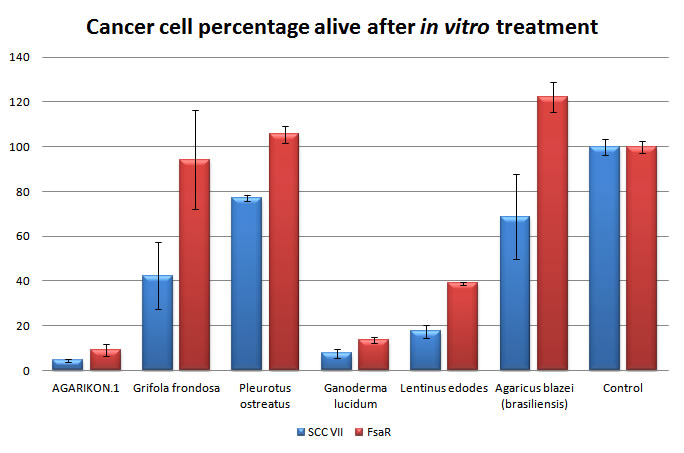
Source: Rudjer Boskovic Institute
The majority of modern medicines originate in nature. Although some mushrooms have been used in therapies for thousands of years, we are still discovering new potential medicines hidden within them. For many years, I have sought and studied Agarikon, an unusual mushroom native to the old growth conifer forests of North America and Europe. A big wood conk -- a perennial polypore -- Agarikon survives for many years and emits spores through whitish pores from its underside each summer (see photo below). This beehive-shaped mushroom may be the longest living mushroom in the world, growing in the temperate conifer forests of Northern California, Oregon, Washington, and British Columbia. This species also survives, precariously, on old growth larch trees in the Slovenian Alps, near the borders of Italy and Austria. Agarikon has two commonly used scientific names: Laricifomes officinalis, preferred for those specimens found on larch trees (Larix species), andFomitopsis officinalis, which applies to those hosted by Douglas fir, spruce, and hemlock.
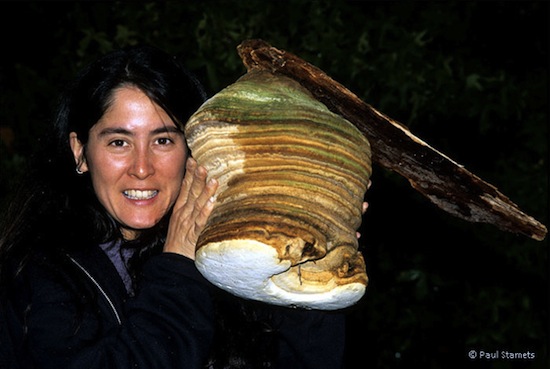
Dusty Yao holding a 40 year-old Agarikon polypore mushroom.
Mycologists at Fungi Perfecti maintain a culture library of 44 strains of this rare mushroom that have been collected around the world over the past 20 years. Eleven of these strains were genetically sequenced and contributed the "genetic fingerprint" of Fomitopsis officinalis to GenBank at the National Center for Biotechnology Information in Maryland.
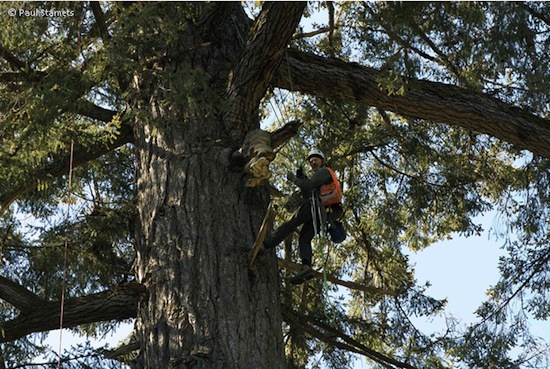
Scott Baker, a tree canopy expert, climbs a 700-year-old Douglas fir tree sporting a huge Agarikon
The Greek physician Dioscorides described Agarikon as "elixirium ad longam vitam" ("the elixir of long life") in 65 A.D. in Materia Medica -- essentially the first known herbal medical manual that listed remedies for fighting diseases. Historically, Agarikon has also been known as the "quinine conk" for its strong bitter taste but should not be confused with true quinine, which is chemically different. In ancient Greece, Agarikon was recommended for treating respiratory illnesses, night sweats, and consumption -- later termed tuberculosis.
Working with the Institute for Tuberculosis Research (ITR) at the University of Illinois at Chicago, we submitted specimens for testing against tuberculosis bacteria. The institute's director, Dr. Scott Franzblau, and his graduate student Chang-Hwa Hwang identified two novel coumarins unique to Agarikon showing anti-tubercular activity (Hwang et al., 2012). These purified compounds are about one or two orders of magnitude away in terms of potency to be considered as drugs; however, their chemical structures may be altered to confer greater biological effects. This effort may transform them into a potential means to counter the epidemic of multidrug-resistant tuberculosis that is sweeping the planet.
Agarikon is not only a strong anti-inflammatory and antibacterial agent, its extracts have also demonstrated antiviral properties. In the wake of the Sept. 11 attack, our team submitted more than 500 samples of diverse mushroom extracts to the BioShield BioDefense program, administered cooperatively by the National Institutes of Health and the U.S. Army Medical Research Institute of Infectious Diseases. After many panels of tests, the species that stood out was Agarikon.
Of the 11 strains of Agarikon from North America that were tested, a few showed exceptionally strong activity against viruses including pox (cowpox), swine (H1N1) and bird (H5N1) flu, and herpes (HSV1, HSV2) viruses. In several sets of tests, dilutions of our natural ethanol extracts against flu viruses exceeded the potency of the positive drug control -- ribavirin -- against flu viruses by a factor of 10 or more. Most recently, a team of Russian researchers has confirmed the strong antiviral activity of Agarikon against H5N1 flu virus and found that Agarikon is comparatively non-toxic to human cells (Teplyakova et al., 2012).
Agarikon contains antiviral molecules new to science. Researchers for pharmaceutical companies may have missed its potent antiviral properties. Our analyses show that the mycelial cultures of this mushroom are most active but that the fruitbodies, the natural form of the mushroom, are not. The fact that Agarikon is active against both viruses and bacteria suggests that it can provide a natural bioshield against potential infection and disease transmission. As the medical values of Agarikon continue to be researched, the value of biodiversity -- or mycodiversity -- of this species can truly be appreciated.
Given these preliminary in vitro results, we need to further explore mushroom-based natural products. Many medicinal solutions may reside within the biological populations of our natural habitats. Viruses and bacteria are rapidly mutating, threatening to overwhelm our health care system. In his book The Viral Storm: The Dawn of the New Pandemic Age, Dr. Nathan Wolfe argues that we live in a time when the transmission of viruses is virtually unstoppable given international air travel and the co-mingling of genomes.
This PDF link is pretty detailed on the biochemistry.
http://www.researchgate.net/publication/262018523_European_medicinal_polypores__A_modern_view_on_traditional_uses PDF DETAILED RESEARCH PAPER
PDF LUNG CANCER STUDY VERY GOOD RESULTS! READ THIS
References:
Hwang, C.H., B.U. Jaki, L.L. Klein, D.C. Lankin, J. McAlpine, J.G. Napolitano, S.G. Franzblau, S.H. Cho, P.E. Stamets, G.F. Pauli. 2012. "Biological and chemical evaluation of anti-TB coumarins from the polypore mushroom, Fomitopsis officinalis." Planta Medica 2012; 78 DOI: 10.1055/s-0032-1321157.
Stamets, P. 2001. "Novel anti-virals from mushrooms." Herbalgram 51: 24-27.
Stamets, P. 2005. "Antipox properties of Fomitopsis officinalis (Vill.:Fr.) Bondartsev et Singer (Agarikon) from the Pacific Northwest of North America." International Journal of Medicinal Mushrooms. 7 (3):495-506. DOI: 10.1615/IntJMedMushr.v7.i3.60
Stamets, P. 2008. "Antiviral and antibacterial activity from medicinal mushrooms." U.S. Patent Application # 12/284,646. Filed September 24, 2008.
Teplyakova, T.V, N.V. Purtseva, T.A. Kosogova, V.A. Khanin, V.A. Vlassenko. 2012. Antiviral activity of polyporoid mushrooms (higher Basidiomycetes) from Altal mountains from Russia. International Journal of Medicinal Mushrooms. 14 (1):37-45.
Wofle, Nathan. 2011. The Viral Storm: The Dawn of the New Pandemic Age. New York: Henry Holt and Company, 2011.
I ordered them from Swansonvitamins but they are also on Amazon.com
But I may get next from here http://1stchineseherbs.com/vitality-blend-ten-species-myriad-mycology-mushroom-powder-1-lb/ in a combo (which makes it work better) and in a 1 pound bag so it's way way cheaper.
Since her cancer is nasal cancer I am hoping that it hits it on cancer, inflammation, and infection control. They also have
UPDATE 10/27/2015 - Lucy did not get any follow up yellow stink snot at all after 2 small bleeds she had since starting this in mid August 2015. She used to get that and it would clear after a week or two of stepped up stuff but those 2 times no infection problem. This is hopefully repeatable. Will keep this updated.
UPDATE 11/12/2015 - This is still repeatable so far. She has had another bleed, this time larger over a few days, and still has no white or yellow mucous drainage after a week. By the way, yes, she has the occasional tiny bleed during the last year. But it is more than 4.5 years after diagnosis and most of it in total remission. I did buy it in the larger cheaper bag at the above.
Lucy never did radiation or chemo, she only did the Tippner Protocol. The Tippner Cancer Protocol combines immunotherapy and molecular cancer therapy using off the shelf readily available inexpensive natural substances. Here is her list. She is past 4 years after diagnosis by biopsy
I buy most of the stuff from Swanson Vitamins. They are cheaper, in capsules for dosage changes, and carry almost everything I give to Lucy except for the Chinese Herbs Stasis Breaker prescription, and the Low Dose Naltrexone prescription. Here is a $5 off coupon link I found
